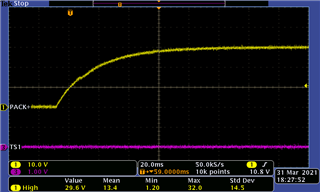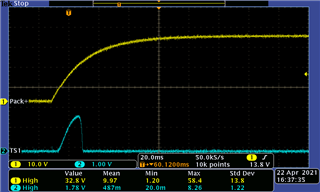Other Parts Discussed in Thread: BQ76930, BQ78350
Hello Sir:
We refer the TIDA00792 document to build our BMS and we have a problem when charger is in soft start condition.
Please refer the waveform of pack+ voltage in our BMS board.

Ch1 is pack+ and Ch3 is TS1, we saw that PACK+ voltage is rising slowly, and TS1 has no responds.
Our schematic shows below.

Please provide recommendations for us how to fix this issue?
Thanks a lot.





